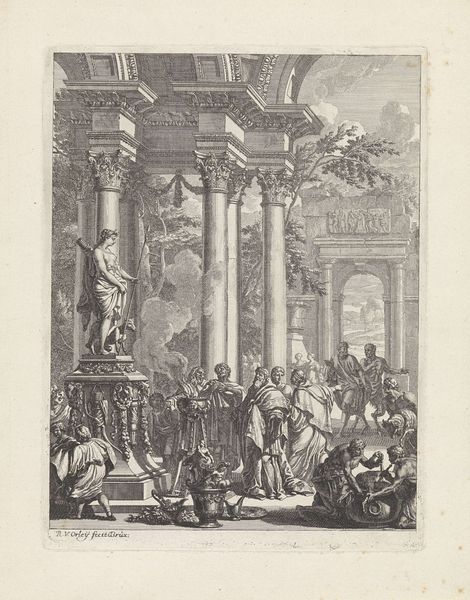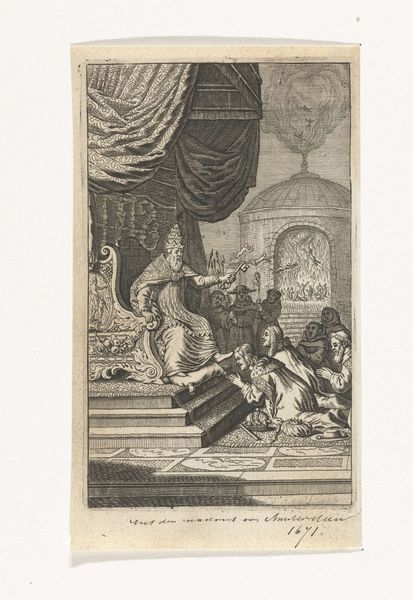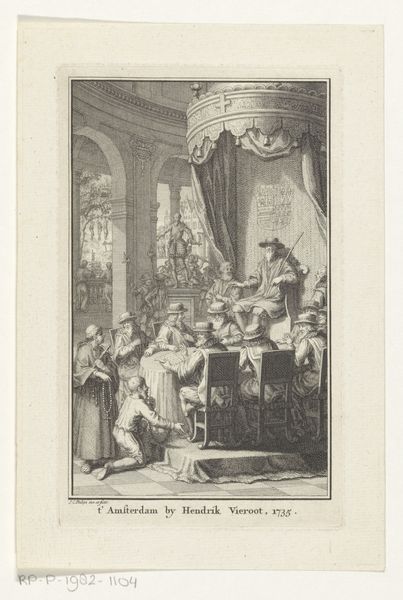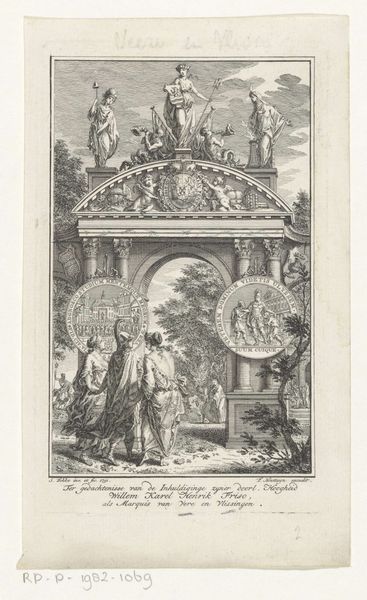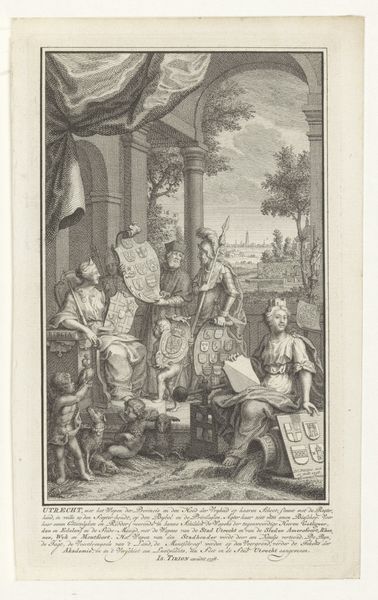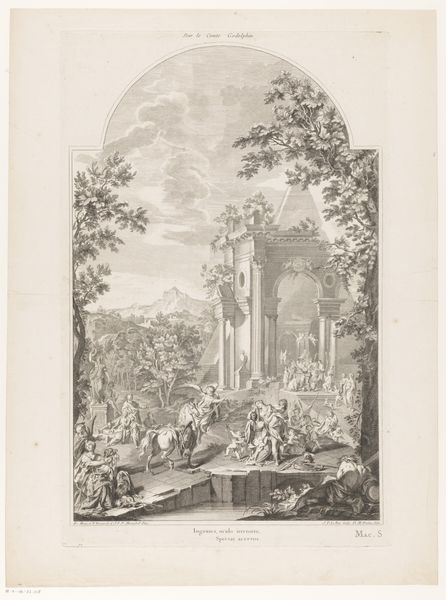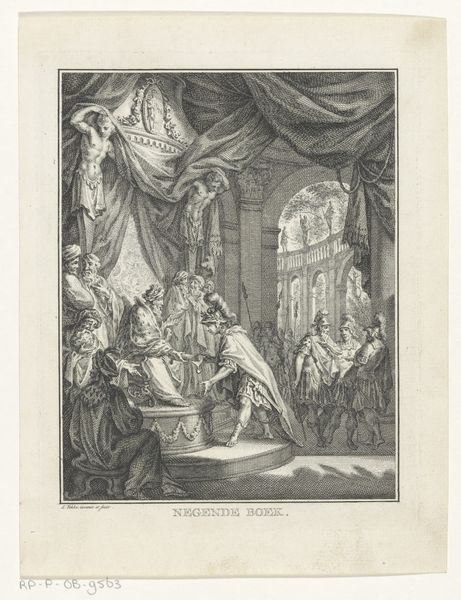
engraving
#
allegory
#
baroque
#
figuration
#
history-painting
#
engraving
Dimensions: height 225 mm, width 171 mm
Copyright: Rijks Museum: Open Domain
Editor: This is "Allegorie op de plantkunde," or "Allegory on Botany," an engraving created in 1743 by François van Bleyswijck. It's incredibly detailed, a baroque interior filled with figures examining plants. It looks like they’re preparing medicines. I’m really interested in how different styles reflect their eras; What do you see in this piece? Curator: Immediately striking is the sophisticated deployment of linear perspective. Van Bleyswijck uses it masterfully to create depth, drawing our eye through the architectural space. Consider how the orthogonals converge towards a vanishing point that subtly emphasizes the implied authority and wisdom inherent in the central figures studying plant specimens. Do you notice how the lighting, rendered through precise hatching, accentuates the texture of drapery and botanical forms? Editor: Yes, now that you mention it, the shading around the curtains and the figures really does create a sense of depth and realism, and guides the eye. Is the building supposed to be recognizable? Curator: Function dictates form here, so details like columns or capitals do not bear too much stylistic consistency and coherence. However, these can serve primarily as elements of spatial articulation. It is in how lines are formed – bold lines or delicate shadings that structure planes to signify different values in what is visually represented on the print – where Bleyswijck is most articulate. Consider how his deployment of perspective directs the viewer through carefully defined zones of knowledge and power! Editor: That makes me appreciate the artist's decisions much more; they contribute significantly to how we read the space and, subsequently, the ideas that botany represents. Curator: Precisely. A keen observation shows a mastery in composition as visual hierarchy.
Comments
No comments
Be the first to comment and join the conversation on the ultimate creative platform.
